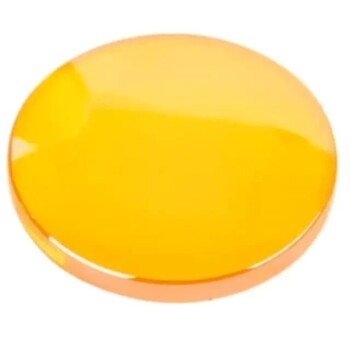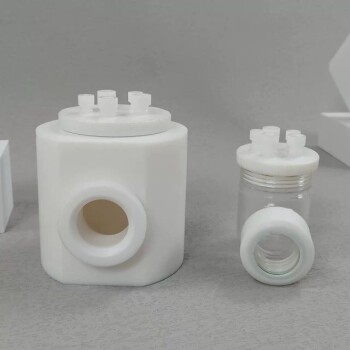Optical windows are essential components in various fields such as telecommunications, astronomy, and laboratory research. Our range includes Diamond optical windows, CaF2 substrates, MgF2 crystals, and more, each designed for specific applications requiring exceptional transparency and durability. Whether you need high-power IR laser windows or versatile optical glass sheets, our products offer precision and reliability.
Toggle Categories
Get Instant Support
Choose your preferred way to connect with our team
-
Get Free Quote Fill out form for detailed pricing
-
Send Email Detailed inquiry support
-
WhatsApp Quick mobile chat
Response Time
Within 8 hours on working days, 24 hours on holidays
optical window

Optical Window Glass Substrate Wafer CaF2 Substrate Window Lens
Item Number : KTOM-CFW

Zinc Selenide ZnSe Optical Window Glass Substrate Wafer and Lens
Item Number : KTOM-ZSW
Advanced Optical Windows for Precision Applications
Optical windows are critical components in many high-tech industries, providing essential transparency and durability for various applications. Our optical windows are engineered to meet the highest standards of performance, ensuring optimal results in demanding environments.
Key Features and Benefits
- Broad Band Infrared Transparency: Our Diamond optical windows offer exceptional transparency across a wide infrared spectrum, making them ideal for high-power IR laser applications and microwave windows.
- Excellent Thermal Conductivity: Designed to withstand high-temperature environments, our optical windows ensure consistent performance even under extreme conditions.
- Low Scattering: Minimized light scattering guarantees clear signal transmission, crucial for precision imaging and spectroscopy.
- Versatile Material Options: We offer a variety of materials, including CaF2, MgF2, Silicon, and Quartz, each tailored for specific wavelength ranges and environmental conditions.
- Customizable Solutions: Recognizing the unique needs of each application, we provide customizable optical windows to meet precise specifications, ensuring the perfect fit for your project.
Applications
Our optical windows are utilized in a wide range of applications, including:
- Telecommunications: Ensuring clear and reliable signal transmission.
- Astronomy: Supporting high-resolution imaging and spectroscopy.
- Laboratory Research: Providing essential components for precise experiments.
- Medical Devices: Enhancing the performance of imaging and diagnostic equipment.
Why Choose Us?
- Expertise and Experience: Our team of experts has years of experience in designing and manufacturing optical windows, ensuring the highest quality products.
- Custom Solutions: We offer tailored solutions to meet your specific needs, whether you require standard or custom-engineered optical windows.
- Professional Support: Our dedicated support team is here to assist you from initial consultation through to delivery and beyond.
For more information or to discuss your specific requirements, please contact us. We look forward to helping you find the perfect optical window solution for your needs.
FAQ
What Are Optical Windows And What Are They Used For?
What Are The Different Types Of Optical Windows Available?
How Do Optical Windows Work?
What Are The Advantages Of Using Optical Windows In High-power IR Laser Applications?
Why Are CaF2 Windows Preferred In Certain Optical Applications?
What Makes MgF2 Windows Unique?
How Does Silicon Perform In Near-infrared (NIR) Applications?
What Are The Benefits Of Using High-temperature Resistant Optical Quartz Glass Sheets?
Why Are Zinc Sulfide (ZnS) Windows Preferred In Harsh Environments?
What Are The Applications Of Barium Fluoride (BaF2) Windows?
REQUEST A QUOTE
Our professional team will reply to you within one business day. Please feel free to contact us!
Related Articles

The Silent Variable: Engineering Reliability in Electrolytic Cells
Data accuracy depends on equipment integrity. Learn the engineering protocols for maintaining electrolytic cells to prevent systemic error.

The Quiet Architecture of Clarity: Preserving Side-Window Optical Cells
Learn the precise protocols for storing optical electrolytic cells. Prevent thermal degradation, chemical etching, and data drift with expert maintenance strategies.

The Silence of the Seal: Why Electrochemical Precision is a Battle Against the Atmosphere
Precision in electrochemistry isn't just about voltage; it's about isolation. Discover how super-sealed cells defeat contamination and define reproducibility.

The Architecture of Control: Why Thermal Stability Defines Electrolysis Success
Discover how double-layer water-bath electrolytic cells eliminate thermal variables, ensuring accuracy and reproducibility in electrochemical research.

The Art of the Non-Spontaneous: Precision in Electrolytic Circuits
Mastering the electrolytic cell setup requires more than connecting wires. It demands a systematic approach to polarity, purity, and power control.

Advanced Technologies for Precision Ceramics
Explores key technologies and preparation methods for precision ceramic components, highlighting their applications and challenges.

Common Optical Materials and Their Properties
An overview of various optical materials, their properties, and applications across different spectral ranges.

Technological Innovations in the Fused Silica Industry
Explore advancements in fused silica, its applications, and future prospects.

Difference between Single Crystal Quartz and Fused Silica
A detailed comparison of single crystal quartz and fused silica across various properties and preparation methods.

Key Properties and Differences Between Fused Silica and Natural Quartz
A detailed comparison of the properties, appearance, physical, chemical, and application differences between fused silica and natural quartz.

Understanding Fused Silica: Properties, Applications, and Advantages
An in-depth look at fused silica, its unique properties, and its diverse applications in various industries.

Comprehensive Overview of Fused Silica: Properties, Production, Applications, and Market Prospects
An in-depth exploration of fused silica, its properties, production process, diverse applications, and promising market outlook.

Infrared Bands and Window Selection for Hypersonic Vehicles
Explores the challenges and solutions in selecting infrared bands and window materials for hypersonic vehicles, focusing on imaging and guidance systems.

CVD Diamond: Superior Material for Optical Windows
Explores the exceptional properties and applications of CVD diamond in optical windows.

Optical Components: Window Sheets and Their Applications
An overview of various types of optical window sheets, their materials, precision, and coating options.

CVD Diamond Optical Windows: Advancing High-Tech Optical Applications in Extreme Environments
Exploring the benefits of CVD diamond optical windows for high-end applications in extreme environments, including aerospace, military, and scientific research.

Advancements in Diamond Optical Window-Related Components
Explores the development and applications of diamond optical window components in various fields, including defense, aerospace, and energy.

Factors in Selecting Large Optical Windows
Considerations for choosing large optical windows, including material, polishing, and coating.

Comprehensive Guide to Optical Windows: Material Properties and Surface Specifications
This article delves into the properties and specifications of optical windows, focusing on material properties, surface quality, and anti-reflection coatings.

Optical Window Sheet Selection Guide
A comprehensive guide on selecting optical window sheets based on substrate material, optical and mechanical precision, and coating options.

